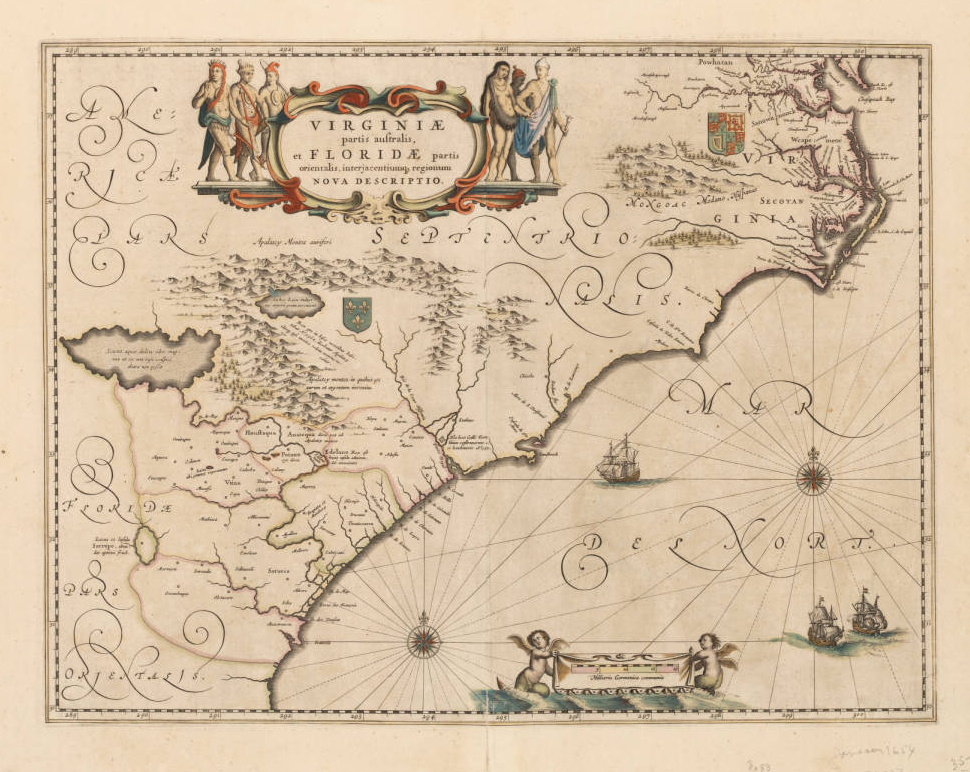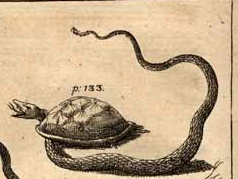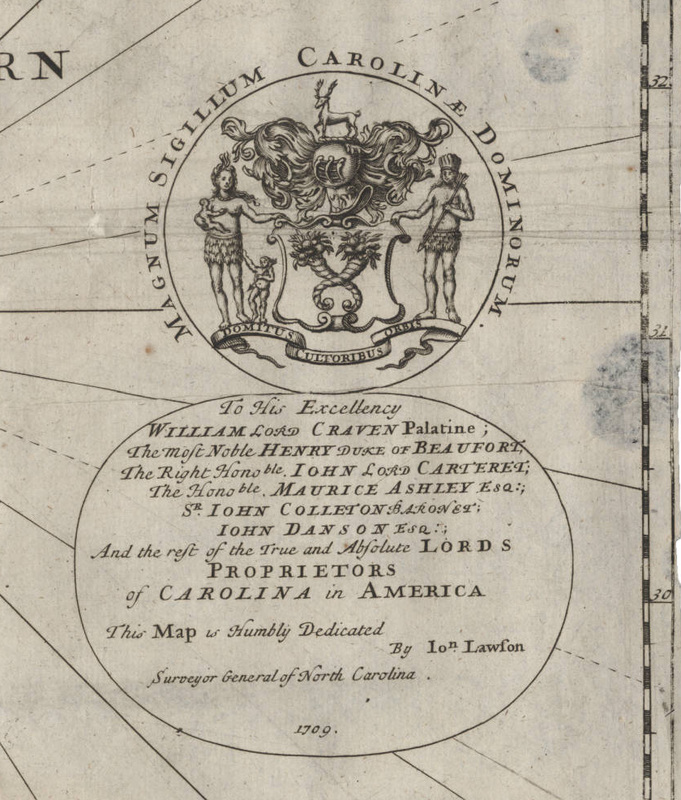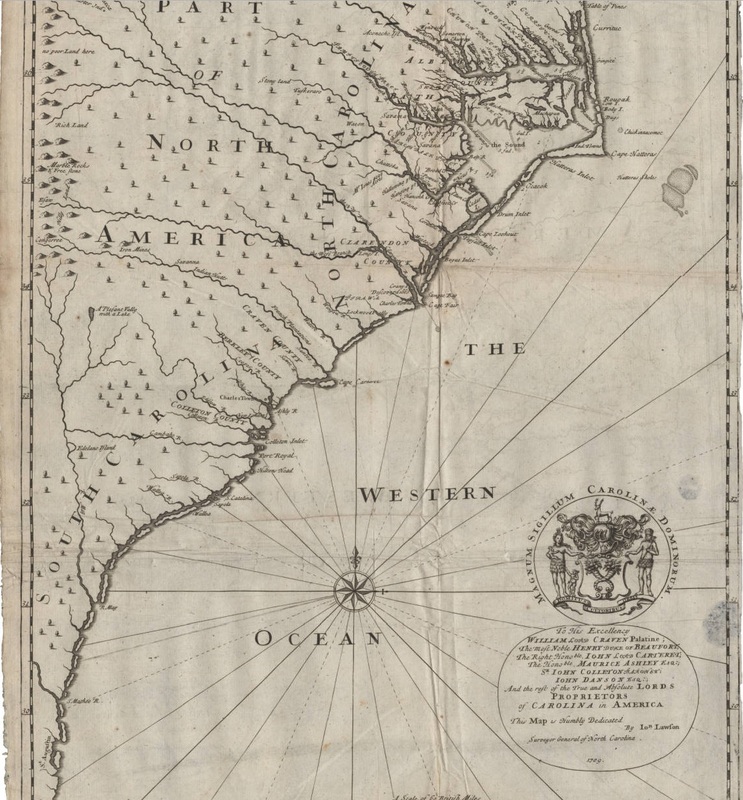|
The 1500s and 1600s were something of a free-for-all when it came to landing on North America, pretending nobody was home, and claiming territory for dear old England, or France, or Spain, or Holland, or anyplace else. Sir Walter Raleigh never actually came to North America, but he financed expeditions to settle the land he called Virginia, which was the first British colony in the world. He sent explorers in 1584 and in 1585 sent scientists and soldiers, who set up a garrison on Roanoke Island of what is now North Carolina. It didn't last. But in 1587 Raleigh sent a hundred or so settlers to form a colony in the Chesapeake region. When the ship stopped in Roanoke to check on the soldiers, the captain, anxious to return to England, forced the settlers off the ship, and there they remained. When colony leader John White -- mapmaker to the earlier expeditions -- left with the captain less than two weeks later for supplies, he got mixed up in the British war with the Spanish Armada and could not return until 1590, by which time the colony had vanished -- it is known to this day as the Lost Colony.
Meanwhile, the Spanish explorer de Soto had led an expedition through what are now South and North Carolina in 1540, and more importantly Juan Pardo set up a fort (recently rediscovered!) in the Appalachians in 1567. More important than Spain's failed attempts to colonize the area is another catastrophe -- the soldiers' introducing European diseases like smallpox, which began the horrific devastation of native populations. When Lawson explored the Carolinas in 1700-1701, he wrote that "I do believe, there is not the sixth Savage living within two hundred Miles of all our Settlements, as there were fifty Years ago. These poor Creatures have so many Enemies to destroy them, that it's a wonder one of them is lest alive near us. The Small-pox I have acquainted you withal above, and so I have of Rum." No virgin paradise for Lawson -- he understood he was seeing the ragged end of a devastated civilization. The British Carolina province got its start in 1629 -- as Carolana -- when Charles I of England granted the land to his attorney general, Sir Robert Heath. Heath never did a thing with it, which meant that when after the Restoration, Charles II decided to reward eight of his strongest supporters with proprietorship over the colony, he could just do it. I mean, he was the king, right? I won't bore you with the names, though all eight of the Lords Proprietors now have counties and stuff named after them. The first settlers came in 1670 and set up Charles-Town, at that point upriver from its current location, to which it moved in 1680. A thriving port doing a brisk trade with slavers from Barbados, by 1700, when Lawson arrived, Charles-Town was probably the fourth largest city in the colonies, with 1,200 people. There had been some exploration of the territory -- by John Lederer from Virginia in 1670, for example, though many believe his descriptions are invented, and a trip up the Savannah River by James Moore in 1690 -- but other than as a home for Indian populations (who didn't much like being captured and sold into slavery), the Carolina backcountry in 1700 was largely unknown to colonists. Because Charleston was so far south in the territory, the northern part began to develop a separate identity, though the colony was not officially divided until 1729. Lawson's book is considered one of the first to treat North and South Carolina as separate entities. |
The video above shows the history of North Carolina as viewed on maps, from the earliest maps of the new world to modern maps. Lawson's map is not included.
|



